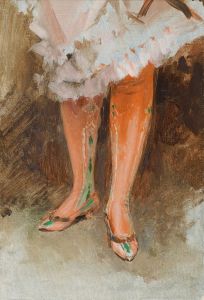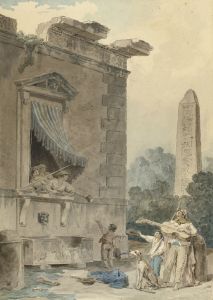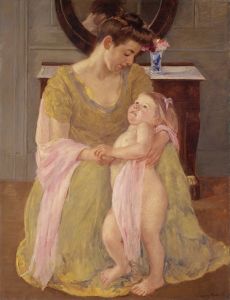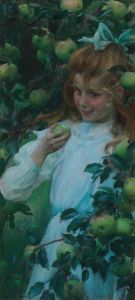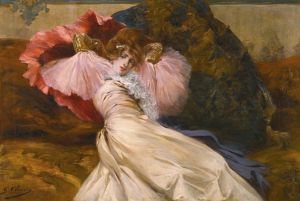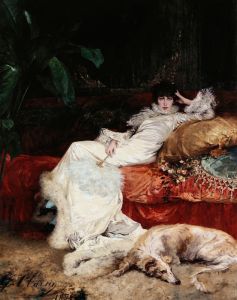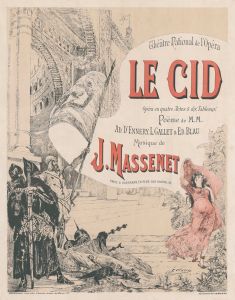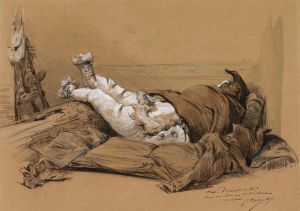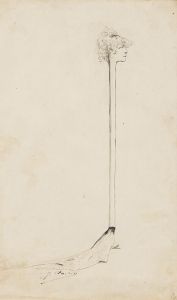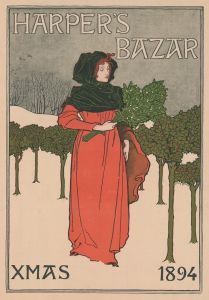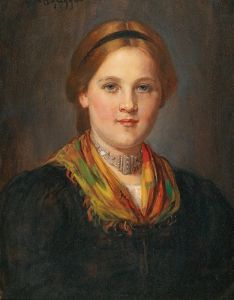
Elégantes dans une église espagnole
A hand-painted replica of Georges Jules Victor Clairin’s masterpiece Elégantes dans une église espagnole, meticulously crafted by professional artists to capture the true essence of the original. Each piece is created with museum-quality canvas and rare mineral pigments, carefully painted by experienced artists with delicate brushstrokes and rich, layered colors to perfectly recreate the texture of the original artwork. Unlike machine-printed reproductions, this hand-painted version brings the painting to life, infused with the artist’s emotions and skill in every stroke. Whether for personal collection or home decoration, it instantly elevates the artistic atmosphere of any space.
Georges Jules Victor Clairin was a French painter known for his portraits and Orientalist works. One of his notable paintings is "Elégantes dans une église espagnole," which translates to "Elegant Women in a Spanish Church." This artwork is a fine example of Clairin's ability to capture the essence of his subjects and the ambiance of the setting, reflecting his interest in both portraiture and architectural spaces.
Clairin was born in Paris on September 11, 1843, and studied at the École des Beaux-Arts under the tutelage of Isidore Pils and François-Édouard Picot. He was part of a generation of artists who were fascinated by the exotic and the picturesque, often traveling to capture scenes from different cultures. His travels to Spain, Morocco, and Italy greatly influenced his work, as seen in his vibrant use of color and attention to detail.
"Elégantes dans une église espagnole" is believed to have been painted during one of Clairin's visits to Spain, where he was inspired by the country's rich cultural and religious heritage. The painting depicts a group of elegantly dressed women inside a Spanish church, capturing a moment of serene contemplation and devotion. The women are adorned in fashionable attire, which contrasts with the solemn and sacred atmosphere of the church interior. This juxtaposition highlights Clairin's skill in blending genre scenes with portraiture, creating a narrative that invites viewers to ponder the relationship between fashion, society, and spirituality.
Clairin's technique in this painting is characterized by his use of light and shadow to create depth and texture. The play of light through the church windows illuminates the figures, drawing attention to their expressions and the intricate details of their clothing. The architectural elements of the church are rendered with precision, showcasing Clairin's ability to depict space and structure convincingly.
Throughout his career, Clairin exhibited regularly at the Salon in Paris, where he gained recognition for his portraits and scenes of everyday life. His works were well-received for their elegance and technical proficiency, and he became a sought-after portraitist among the Parisian elite. In addition to his paintings, Clairin also worked as an illustrator and muralist, contributing to the decoration of public buildings and private residences.
While "Elégantes dans une église espagnole" is not as widely known as some of Clairin's other works, it remains an important piece that reflects his artistic interests and the cultural exchanges of the 19th century. The painting is a testament to Clairin's ability to capture the beauty and complexity of his subjects, offering a glimpse into the social and cultural dynamics of his time.
Georges Jules Victor Clairin continued to paint and exhibit until his death on September 2, 1919. His works are held in various collections, and he is remembered as a prominent figure in the Orientalist movement and a master of capturing the elegance of his era.





